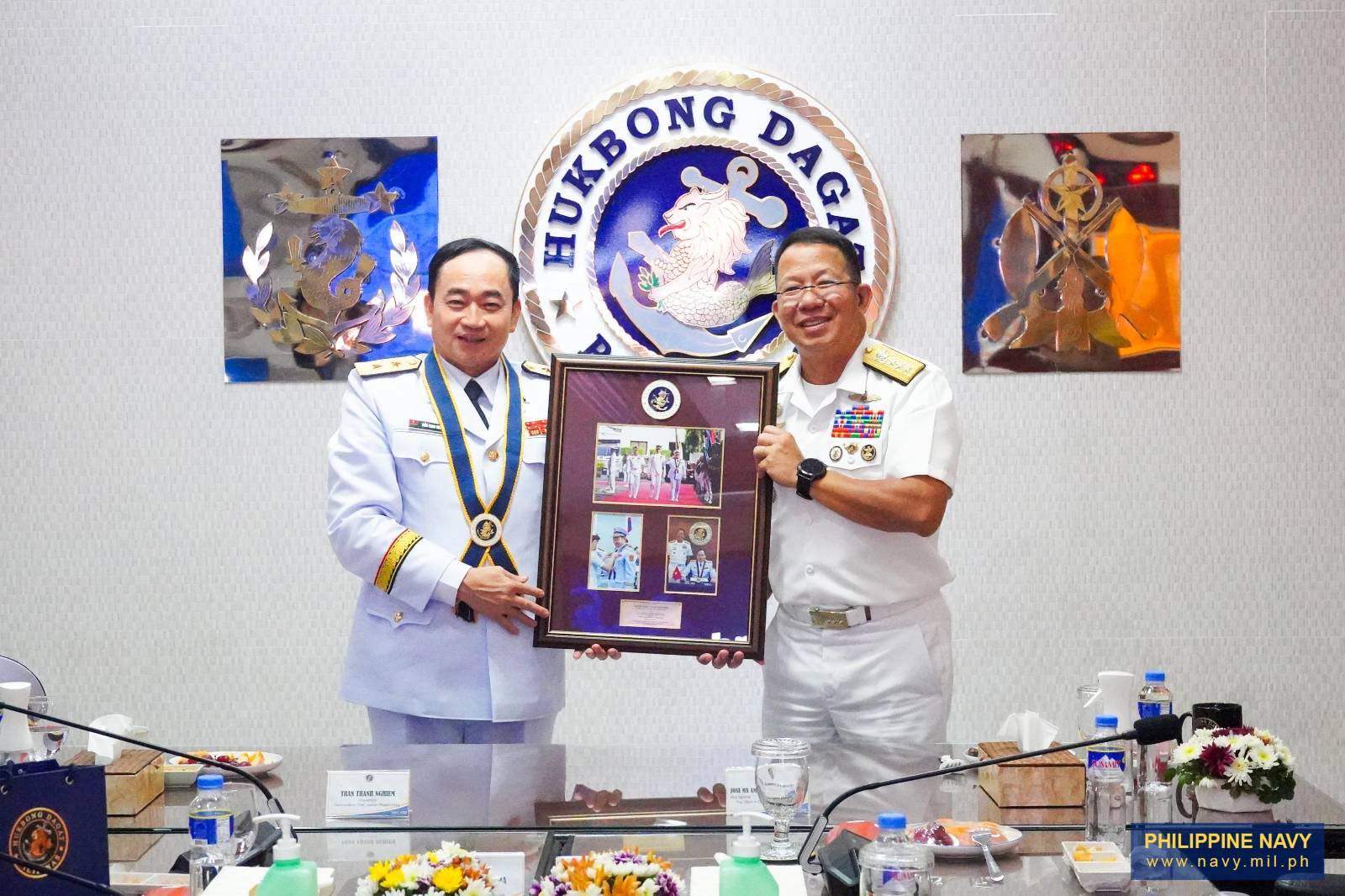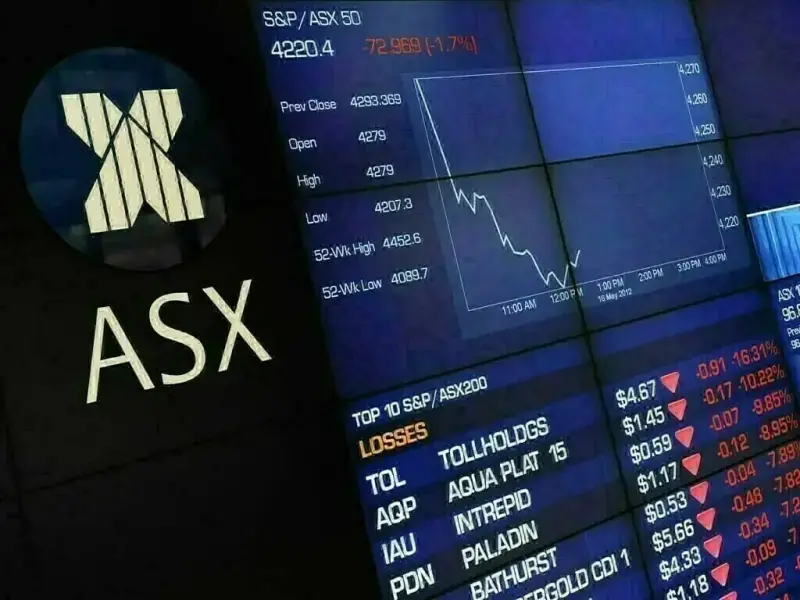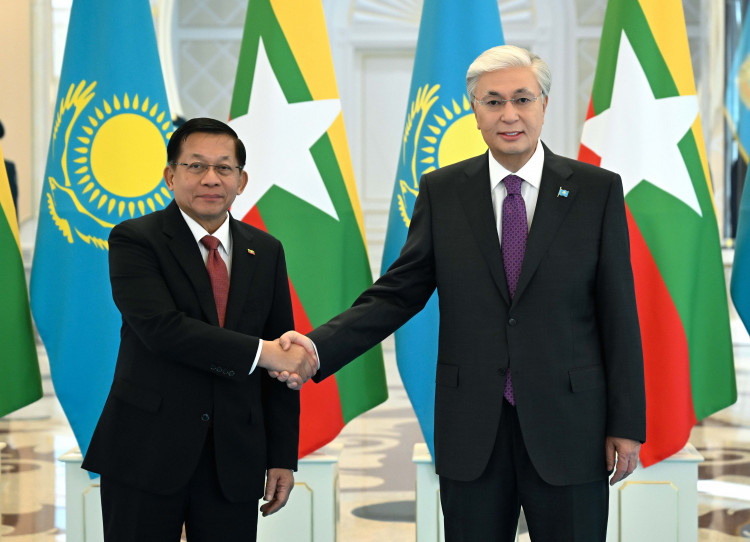By Sam Beltran
Copyright scmp

A pledge between the Philippines and Vietnam to deepen naval cooperation could serve as a “model for maritime collaboration” amid mounting tensions in the South China Sea, according to observers.
Philippine Navy chief Vice-Admiral Jose Maria Ambrosio Ezpeleta and his Vietnamese counterpart Tran Thanh Nghiem met last week in Manila, where they reaffirmed their commitment to conducting joint activities, humanitarian coordination and regional maritime security.
“We are maritime neighbours with quite a short distance from each other. As we say in Vietnam, the more we meet, the better we understand each other,” Nghiem said, adding that both countries “share common interests, as well as difficulties, which we must address together for peace and stability”.
Ezpeleta said Philippine and Vietnamese naval forces “already have a very good relationship” and “we help each other in many ways, particularly now that we share the same issues and concerns”.
“Hopefully, we can find ways to ease the pressures in our waters while further strengthening this partnership,” said Ezpeleta, who also thanked Hanoi’s continued help with rescuing distressed Filipino fisherfolk at sea.
Nghiem’s trip to Manila comes months after the Philippine army top brass visited Vietnam and held talks with the country’s military leaders.
Tran Thi Mong Tuyen, a fellow at the foreign policy think tank Pacific Forum, said that naval relations between the Philippines and Vietnam “have moved beyond symbolism towards practical cooperation”.
This includes maintaining traditional mechanisms like ship visits and joint search-and-rescue operations, and adding new steps such as their first joint coastguard drills held last August.
“These activities indicate that the relationship is evolving towards operationally meaningful cooperation. If sustained, such initiatives, including future naval port calls or ship-to-ship dialogues, could make the Vietnam-Philippines partnership a model of practical maritime collaboration in the South China Sea,” Tran told This Week in Asia.
Julio Amador, interim president of the Foundation for the National Interest, said the intensifying of ties signified that both sides “feel that this is the time for their neighbours to engage more deeply with each other,” despite their varied approaches to tackling Beijing’s tactics in the South China Sea.
“Vietnam is not very public when it comes to criticisms of China, rightly so, because its own strategic considerations can be quite different from Manila,” said Amador, who is also the founder and trustee of the non-profit policy advisory firm FACTS Asia.
“So in that sense, to engage in something like this with the Philippines … with the possibility of earning condemnation or the ire of China, really speaks about the way that they’re perceiving the strategic environment.”
Observers said deepened naval cooperation could include activities in humanitarian help and disaster relief, as well as more frequent goodwill exchanges on islands like the Northeast and Southwest Cays within the Spratly Islands, where the two countries have overlapping claims.
“Additionally, defence-industrial collaboration could grow, as Philippine officials have noted Vietnam’s strengths such as quality military textiles as potential areas to source equipment and technology,” Phan Xuan Dung, research officer at ISEAS – Yusof Ishak Institute and a PhD candidate at the Australian National University, told This Week in Asia.
Setting the stage for a COC?
As the Philippines takes over the chairmanship of the Association of Southeast Asian Nations next year, observers say a stronger partnership with Vietnam may help inject momentum into closer cooperation on maritime matters among the bloc, including the possible finalisation of a code of conduct (COC) in the South China Sea.
Chester Cabalza, founder and president of the International Development Security Cooperation think tank in Manila, said the two nations “must encourage the formulation of the code of conduct among willing Asean states and security partners outside Asean as a baseline for a bigger and final code of conduct with China” as the Philippines would set the security agenda for the group next year.
Vietnam could potentially mediate talks between the Philippines and China, offering insights on how it simultaneously maintains defence ties with Beijing and stands up to the economic giant, he said.
With President Ferdinand Marcos Jnr signalling that Manila will push for a finalised and binding COC when it helms Asean, “having Vietnam – which also prefers the COC being legally binding – lends weight to this effort”, Phan told This Week in Asia.
While Hanoi and Manila “can be expected to synchronise their positions so that Asean statements and initiatives on the South China Sea are stronger and more unified”, a lack of consensus among other members could derail that strategy, he added.
“Enhanced Vietnam-Philippines cooperation also sets an example of claimant states working together, which could encourage others such as Malaysia and Brunei to align on an approach towards the South China Sea,” he added.
However, Amador cautioned that the Philippines should pay attention to the environmental damage caused by Vietnam’s increasing reclamation activities in the Spratlys despite their growing ties.
“Vietnam is actually reclaiming more than any other Asean claimants amid its competition with China. The difference is that [the Philippines] doesn’t see Vietnam as a strategic threat, but we have to be mindful that we have overlapping claims with Vietnam and their reclamation is just as damaging as China’s,” he said.
While Amador was sceptical of achieving a finalised COC by next year, he said the “goodwill” shown by Hanoi and Manila could encourage claimant states to collaborate in other areas.
“If the naval cooperation will bear fruit, it will show that we can have cooperative activities not necessarily just with Western partners.
“We haven’t had serious cooperative activities with Asean countries. If it moves towards that direction, then it’s all for the better for our regional stability,” he said.



